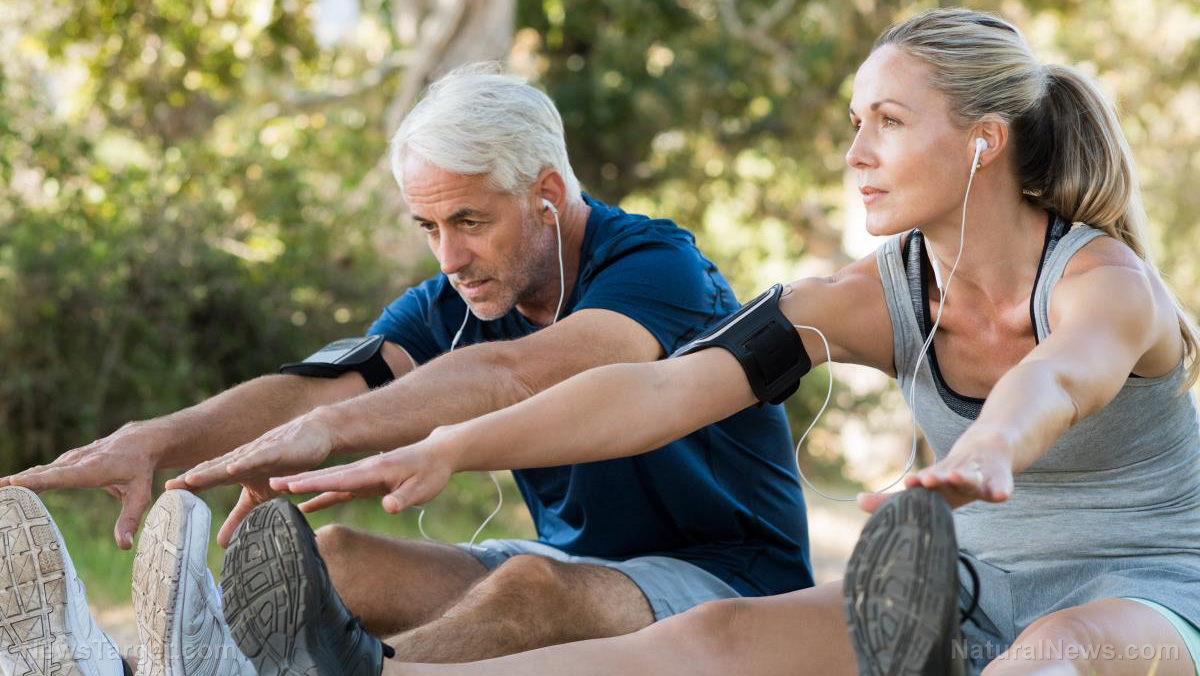
The study, which was conducted by researchers at the University of Massachusetts Amherst (UMass Amherst), was published in the journal Medicine & Science in Sports & Exercise.
Pedaling (at your desk) for good health
Based on the study findings, pedaling while accomplishing work tasks helped improve insulin responses to a test meal. The investigative team, which was led by Dr. Stuart Chipkin, reported that "insulin levels following the meal were lower when sedentary workers used a pedal desk compared to a standard desk."
The researchers believe that pedal desks can potentially help "achieve public and occupational health goals in sedentary work environments." The team of researchers warned that physical inactivity and sedentary work environments were linked to higher rates of diabetes, heart disease, and obesity through insulin resistance and other mechanisms. (Related: Eyes, heart, butt: All are in danger from your desk job – here’s what you can do about it.)
Chipkin is an endocrinologist at UMass Amherst's School of Public Health and Health Sciences, and his field of study includes the impact of physical activity and medications on insulin sensitivity and skeletal muscle metabolism.
He suggested that instead of trying to resolve the issue by telling people to fit in intermittent activity into a work routine that's mostly sedentary, they should consider integrating physical activity into the workday.
The researchers shared that while office workers now have access to various alternatives like standing desks and treadmill desks, these contraptions aren't practical for use during a whole shift. Some options may also result in other concerns, such as an employee having to stand too long, which can result in backaches, fatigue, or leg cramps.
On the other hand, a pedal desk can be used while an employee is sitting down. It also gives people the freedom to engage in physical activity at their own pace for as long as they want to.
Since there were no commercial pedal desks on the market, the researchers used a prototype Pennington Pedal Desk that was co-invented by UMass Amherst kinesiology researcher Catrine Tudor-Locke. While Tudor-Locke was a co-author, she did not determine study design or interact with volunteers or study data.
In the study, the researchers worked with 12 overweight or obese full-time sedentary office workers. The group included six men and six women.
The volunteers were tested in two conditions: pedaling at self-selected light-intensity pace for two hours, and working while seated for two hours at a regular desk. The volunteers were instructed to finish computer-based tasks for both conditions.
They were tested on:
- Concentration/attention
- Mouse proficiency
- Reading comprehension
- Typing speed and accuracy
After eating a light meal, the volunteers provided the researchers with blood samples that were analyzed for metabolic responses of glucose; insulin and free fatty acids; and a link between obesity, insulin resistance, and Type 2 diabetes.
The researchers commented that participants who used pedal desks required significantly less insulin to maintain glucose concentrations, unlike the participants who were using the standard desk. This means that it required much less insulin to keep their blood sugars the same.
With a pedal desk, the body isn't required to work so hard to maintain blood glucose and fatty acid levels, unlike when a person is using a standard desk. Additionally, from the work point of view, pedal desks didn't affect a person's ability to accomplish work tasks.
Chipkin said that he intends to continue studying the impact of the pedal desk on people with diabetes in future studies.
Visit Health.news for more tips on how to stay healthy and physically active in the workplace.
Sources include:
Please contact us for more information.























